FAQ: Thermocouple Installations
Can You Split Thermocouples?
Thermocouple sensors are meant to provide a single measurement to a system an not meant to be connected to one measurement channel. When more than one measurement is needed, dual thermocouples provide that extra measurement signal.
Can You Splice Thermocouples?
When splicing thermocouples into an existing application, keep in mind that:
- Make sure that you are replacing one thermocouple with a similar Type (example: a Type K for Type K).
- Make sure that the polarity is maintained (negative wire is red for ANSI/ASTM or White for IEC).
- Non-thermocouple splices are acceptable and will not result in an increased measurement error if there is no thermal gradient across the splice.
- A quick calibration or polarity test is encouraged after a new sensor is installed to validate the connections are correct. When the thermocouple is heated, a positive change in output should be observed.
Is it Possible to Solder Thermocouples?
Omega does not recommend that thermocouple wires be soldered. With the exception of the Type T copper leg, thermocouple alloys do not solder easily. It is possible to solder these materials, but very aggressive flux is typically needed to remove oxides from the surfaces during soldering. If soldering is done, then it is important that the flux is completely cleaned from the wires, and a close inspection for cold solder joints is made.
The conductors in Type C thermocouples will readily oxidize when exposed to soldering temperatures in the presence of oxygen.
How to Extend Thermocouple Wires
When thermocouple cables must be extended, Omega suggests the use of thermocouple connectors or other mechanical means. This helps to insure that the polarity is maintained (since the connectors have the polarity marked on them), thermocouple connectors are keyed to insure that they only go together in the correct manner.
Thermocouple Installations | Related Products
↓ View this page in another language or region ↓
 CLOSE
CLOSE

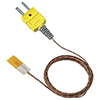
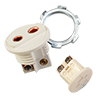
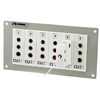
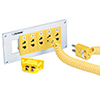
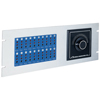
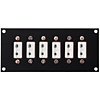

 FAQ: Thermocouple Installations
FAQ: Thermocouple Installations FAQ: Thermocouple Installations
FAQ: Thermocouple Installations